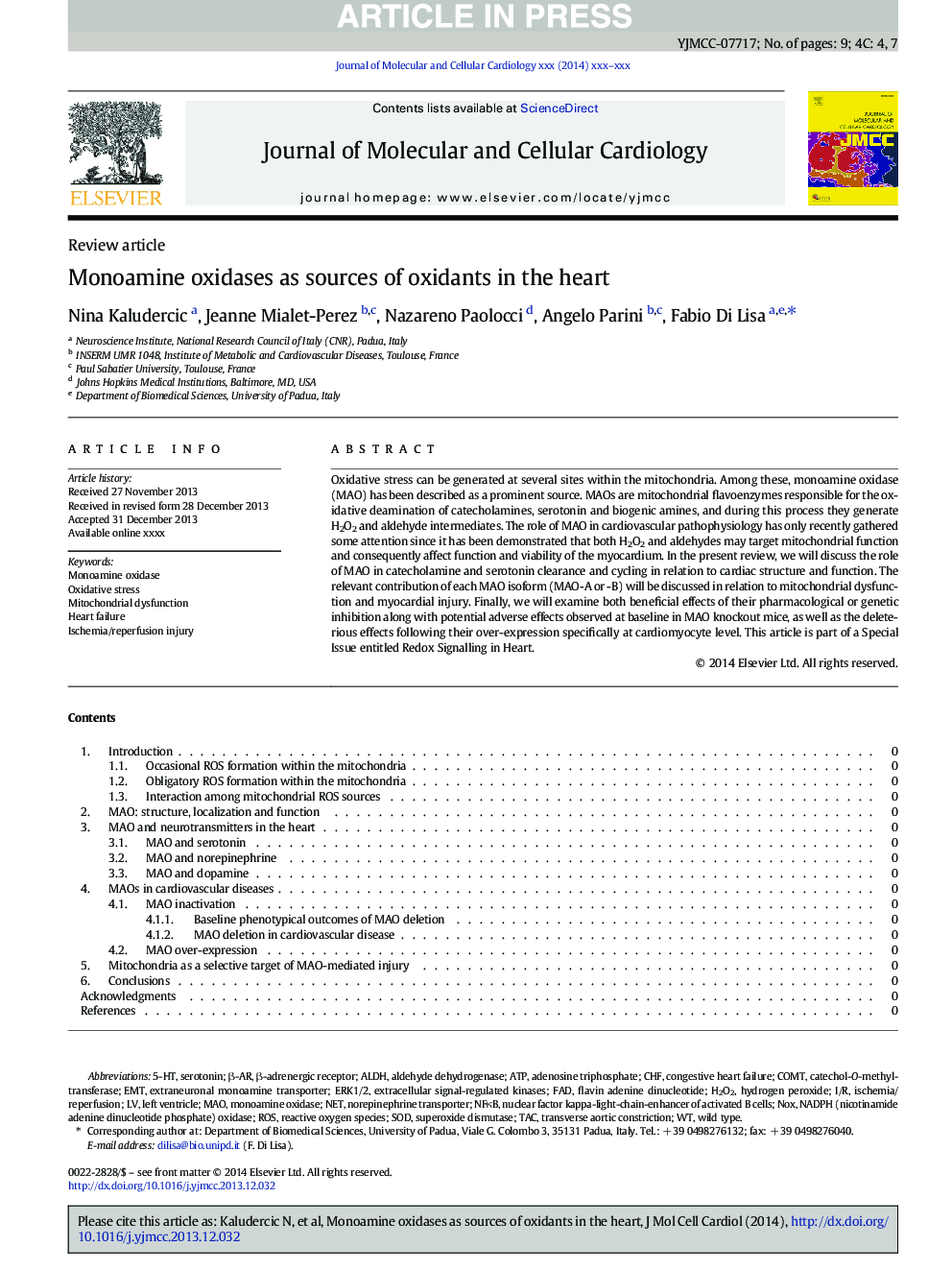| Article ID | Journal | Published Year | Pages | File Type |
|---|---|---|---|---|
| 8474786 | Journal of Molecular and Cellular Cardiology | 2014 | 9 Pages |
Abstract
Oxidative stress can be generated at several sites within the mitochondria. Among these, monoamine oxidase (MAO) has been described as a prominent source. MAOs are mitochondrial flavoenzymes responsible for the oxidative deamination of catecholamines, serotonin and biogenic amines, and during this process they generate H2O2 and aldehyde intermediates. The role of MAO in cardiovascular pathophysiology has only recently gathered some attention since it has been demonstrated that both H2O2 and aldehydes may target mitochondrial function and consequently affect function and viability of the myocardium. In the present review, we will discuss the role of MAO in catecholamine and serotonin clearance and cycling in relation to cardiac structure and function. The relevant contribution of each MAO isoform (MAO-A or -B) will be discussed in relation to mitochondrial dysfunction and myocardial injury. Finally, we will examine both beneficial effects of their pharmacological or genetic inhibition along with potential adverse effects observed at baseline in MAO knockout mice, as well as the deleterious effects following their over-expression specifically at cardiomyocyte level. This article is part of a Special Issue entitled "Redox Signalling in the Cardiovascular System".
Keywords
COMTMAOflavin adenine dinucleotideChFβ-ARALDHTACnorepinephrine transporterExtraneuronal monoamine transporterCatechol-O-Methyl-Transferase5-HTERK1/2I/RNFκBNOxROSHydrogen peroxideAdenosine TriphosphateATPIschemia/reperfusion injuryaldehyde dehydrogenaseMitochondrial dysfunctionischemia/reperfusionFADleft ventricleOxidative stresstransverse aortic constrictionEMTNETSODSerotoninSuperoxide dismutasenuclear factor kappa-light-chain-enhancer of activated B cellsmonoamine oxidasecongestive heart failureheart failurewild typeH2O2extracellular signal-regulated kinasesReactive oxygen speciesβ-Adrenergic receptor
Related Topics
Life Sciences
Biochemistry, Genetics and Molecular Biology
Cell Biology
Authors
Nina Kaludercic, Jeanne Mialet-Perez, Nazareno Paolocci, Angelo Parini, Fabio Di Lisa,
